Page 1 Page 2
Overwatch: The Review
I can’t tell you exactly how much time I have spent in Overwatch. I can tell you that I have 92 hours played since I got the game, with 3 of them against the AI, 22 of those in Quick Play and 67 of them in Competitive Play. I have maybe a dozen more from messing around in the PTR (Public Test Region), and probably all of that again from back in the betas. Of the 92 hours in the launched version of the game, I’ve reached level 80, and my highest competitive rank is 49. Within those 80 levels, I’d consider myself ‘almost good’ at 10 of the 22 characters, ‘okay’ in another 9, and absolutely awful at the final three. Those final three are the three snipers.
I cannot snipe in this game. It’s maddening.
Thankfully, I don’t really need to be good at sniping. Overwatch, a 6v6 objective oriented first person shooter, is designed in such a way that if I can’t snipe, I can do anything else and still be useful. Or, at the very least, pretend to be useful.
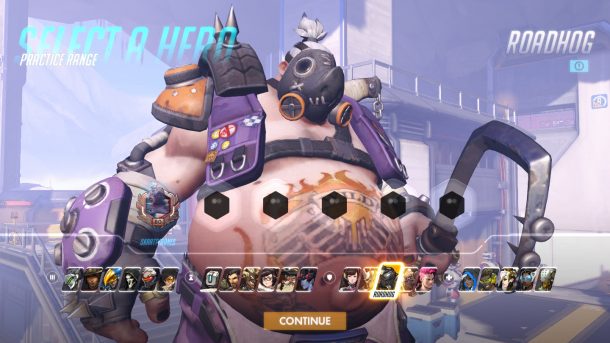
Well, that’s the idea, at any rate. Depending on which game mode you play, there could be various hurdles to deal with — so let’s run over the modes.
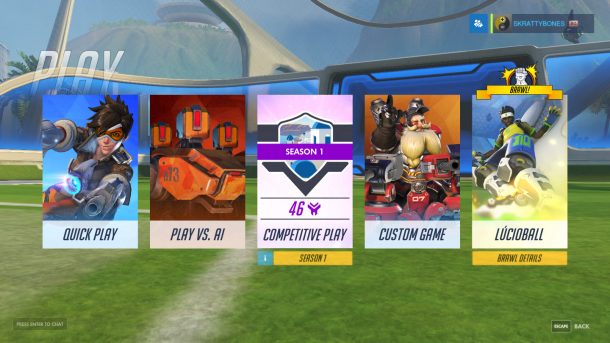
Quick Play, the ‘default’ mode of Overwatch, is two teams of six with no restrictions in place. Teams can choose individual heroes or all pick the same hero, or some can double up on heroes if they want. While this mode was originally the mode, it’s now become thought of as the ‘practice’ mode. This is what you’re meant to play if you’re just looking to have fun, cause chaos, or learn how to play a new character. Win or lose, it doesn’t really matter as long as you’re having fun.
Play Vs. AI is much the same as Quick Play, except instead of an enemy team of players, it’s an enemy team of AI. The AI comes in three flavours of difficulty, and not all of the characters show up as AI, but this mode’s equally as good for learning how to play a character or just easily getting the last bit of experience you need to level your profile up.
Custom Game is a mode that lets you mess with almost every conceivable variable. You want just a normal match with eleven of your best friends? You can do that. You want a match with only one character available? You can do that too. How about a match where any damage that isn’t a headshot is negated? Yup. Want to play a mode where you can’t pick what
character you play as, and respawn as a random character every time you die? You can do that too.
Weekly Brawls are the Overwatch twist on Hearthstone’s Tavern Brawls. Lasting for one week a piece, they offer specific rule sets and vary wildly. One week was standard gameplay, but only Soldier 76 could be picked. Another only let you choose Pharah and Mercy. During the Olympics, there’s Lucioball.
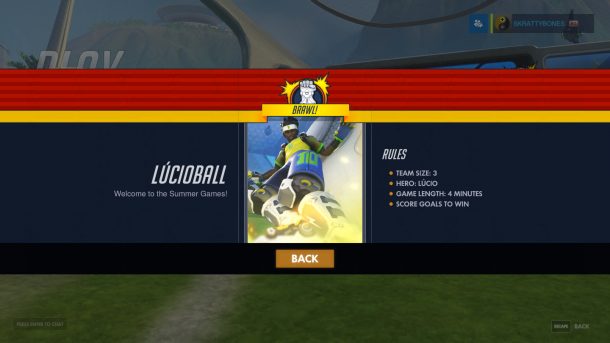
Savvy players may have noticed I skipped one of the modes — Competitive Play. I saved this one for last, because, to me, this is the mode that has become the core of Overwatch. Competitive begins with ten placement matches, after which you’ve given a placement on a scale of 1 to 100. Assuming you’re as perfectly average as me, you’ll probably end up somewhere close to winning five and losing five, which’ll stick you somewhere around rank 50. Then you’ll begin fighting to rank up and dreading the rank down.
Competitive carries its own ruleset, kind of. While it still utilizes all of the currently available maps — 21 individual arenas across twelve environments — matches are as little as twice as long as any of the other modes, and can often go longer. For example, one of the maps, Hanamura, requires your team to attack, beat the enemy team and hold a
point long enough to capture it.. and then do it again, at a point immediately outside the enemy’s spawn. You have several minutes to take the first point, and then several minutes more to take the second point. Then, once that round ends, the teams switch sides and now you’re defending against their attack.
In this particular example, if both teams are incredible at attacking and simultaneously awful at defending, it will switch over and over until both teams run out of time. And if they’ve both managed to capture the same amount of points across all the rounds, it goes to sudden death — a last ditch, 95 second round where the attacking team needs to only capture the first point, or the defenders need to defend. It’s rare, but these matches can go on for around a half hour, though they’re normally much shorter.
Competitive also imposes a hero limit — one of any character per team at a time. While the core mechanic of Overwatch, switching characters during the match remains in place, you can never double up. The limitation prevents some of the more wacky strategies employed in Quick Play, and requires players be familiar with a variety of the characters in order to be effective. If you can only play one character and someone else selects it.. you and your team are going to have a bad time.
This mode also requires a basic level of communication, something easily done via the game’s built in voice chat. You got a mic? You can communicate effectively. More often than not, a team that’s communicating is a team that’s winning.
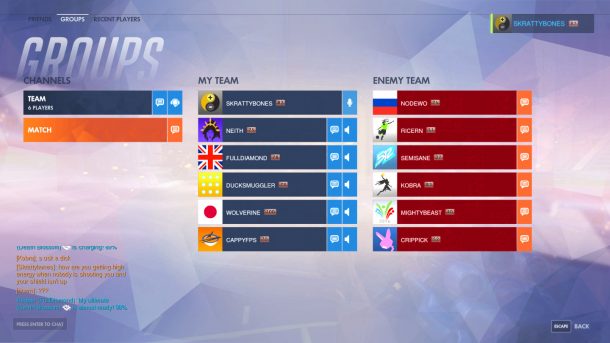
Honestly, it’s difficult to come up with much in the way of criticisms of the actual gameplay. The entire stable of heroes seems relatively well balanced against itself, and Blizzard seems to listen to the masses when they think a character is too weak or too strong. McCree has been balanced several times to try and get him just right, and D.Va, formerly a tank so bad she was almost never picked, is now the best tank in the game thanks to a tiny buff and a change in how one of her abilities works. Torbjorn, a dwarf who builds turrets, used to be the bane of every player, and Blizzard nerfed his turrets to make them easier for players to handle.
In short, Blizzard’s built themselves a great playing, relatively bug free game.
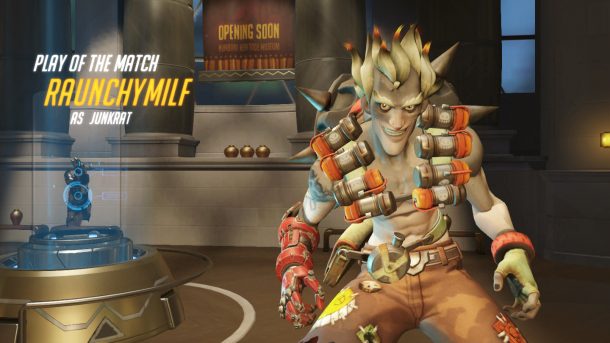
It’s the human element of the game that makes it so trying. I mentioned before how communication is the key to victory. The vast majority of players simply refuse to do so. Whether or not this is because they don’t own microphones, or because they don’t like to talk, it’s a factor that can cost a team games. There are players — everyone, I bet, has encountered these — who lock in a single character and absolutely refuse to ever switch. There are the absolutely toxic players, who voice and type abuse to nobody, to their team, or to the other team, usually indescriminately choosing a target for their ire. There are players who will simply ragequit out of a match if things don’t go well from the jump. One failed attack, with several minutes still on the clock, and they’re gone. There are the players who, while not directing their toxicity at anyone in particular, will constantly be shouting slurs, for no apparent reason.
If there’s anything to criticize about actually playing Overwatch, it’s that you need to play with other people. Unfortunately, this human element is a necessary evil for Overwatch to be one of the most fun games I’ve ever played — a game I’m sure I’ll continue to play for a very long time.
Page 1 Page 2

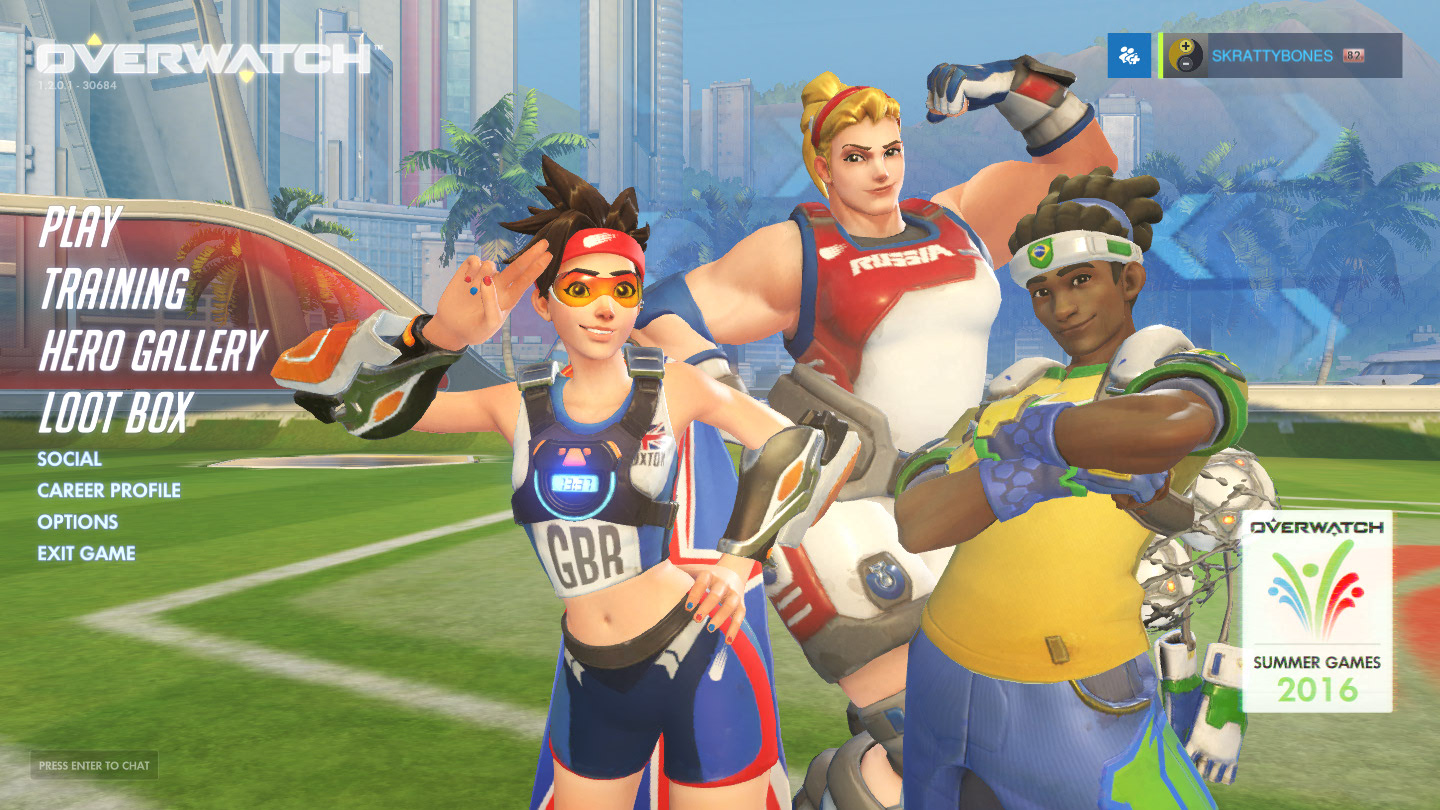
No Comments